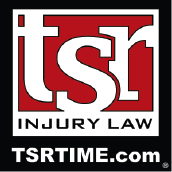Challenges of Claims for Rear-End Motorcycle Crashes
 Rear-end crashes between two cars are often viewed as minor collisions. While every situation is different, this may be true for some crashes. However, rear-end motorcycle crashes are often much more dangerous, as there is a significant risk of the motorcyclist being thrown off the bike.
Rear-end crashes between two cars are often viewed as minor collisions. While every situation is different, this may be true for some crashes. However, rear-end motorcycle crashes are often much more dangerous, as there is a significant risk of the motorcyclist being thrown off the bike.
These crashes can cause severe injuries for riders, particularly when the crash occurs at high speed. Victims may be left with large medical bills and other damages that affect various aspects of their lives. Legal claims for these types of crashes could be complicated because the victim may be seeking significant compensation. Insurance companies will always look for a way to deny or at least underpay these claims.
Injured riders should strongly consider legal representation. You not only need a Bloomington motorcycle accident attorney who knows how to determine the full value of a claim and how to negotiate, but you also need an attorney who is prepared to take a case to court. You need full compensation to ensure you can get the medical treatment you need and mitigate other damages you suffered.
Why Do Rear-End Motorcycle Crashes Happen?
Many rear-end motorcycle crashes happen at intersections. For example, when a motorcyclist stops or slows down at an intersection and gets hit by an approaching car. Motorcycle rear-end crashes may also happen in heavy traffic.
Rear-end crashes could also happen around blind curves. The rear driver may not be able to see around the corner to see that a motorcycle is stopped ahead. If the driver is not familiar with the area, he or she may be more likely to get into a crash. Drivers who are more familiar with the area may anticipate stopped traffic around the corner and react accordingly.
There are various reasons why drivers of cars may crash into the rear of a motorcycle. For example, they may have been distracted. They may have been:
- Texting
- Engaging in a cellphone conversation
- Paying attention to a GPS system
- Talking to passengers
- Eating
- Applying makeup
These are all reasons for rear-end crashes between any two vehicles, including motorcycles. However, drivers often do not check for motorcycles. If they are checking for other vehicles, they are looking for cars. People often fail to see things they are not looking for. Motorcycles are much smaller than cars, so it may be easier to miss them, particularly if you are not being attentive to the road and the traffic around you.
Some drivers do not leave enough space between their vehicle and the one in front of them. This can make it more difficult to stop before plowing into the back of the vehicle in front of them. This can be particularly dangerous when the rear driver is distracted, impaired or speeding.
Often, drivers who are following another vehicle too closely are speeding. They are unable to get around the vehicle in front of them and they decide to tailgate this vehicle.
It is important to note that when a motorcyclist downshifts or rolls out the throttle, it slows the bike down but does not cause the brake lights to light up. That is why drivers need to keep their eyes on the road, so they can notice when a vehicle appears to be slowing down.
Impaired driving is another reason for a rear-end motorcycle crash. Drivers who are under the influence of alcohol, illegal drugs or even prescription drugs may have impaired reaction time. They may not react quickly enough to stop before hitting a motorcyclist, particularly if they were not paying attention, which often happens to impaired drivers.
Injuries Riders May Suffer in a Rear-End Crash
When a car rear-ends a motorcycle, the rider could get thrown over the handlebars and onto the ground. The bike can cartwheel and catapult the rider into the air. Sometimes riders fall to the left or right because of the impact.
These crashes can result in serious injuries, including:
- Spinal cord damage
- Whiplash
- Fractures
- Traumatic brain injuries
- Internal organ damage
- Disfiguring injuries
- Crush injuries that require amputation
- Lacerations
- Head injuries
- Soft-tissue damage
- Herniated discs
Assessing Liability for a Rear-End Motorcycle Crash
Drivers are often liable for crashes with motorcycles. They are often negligent for some reason, such as distracted driving, tailgating, impaired driving or speeding.
Negligence refers to a failure to uphold a duty of care. In other words, negligence is a failure to take reasonable action to prevent an injury. Following traffic laws can be considered reasonable action.
For example, under state law, drivers may not follow another vehicle more closely than is reasonable and prudent, considering the speed of other vehicles and traffic conditions.
While drivers are often at fault for rear-end motorcycle crashes, there are times when motorcyclists could be partially at fault. For example, if a motorcyclist cuts off another car while changing lanes, and a rear-end crash results, the motorcyclist may be at least partially at fault.
If the brake light on your bike was not working, and you were rear-ended, it may be possible to argue you are partially to blame because the rear driver was not properly warned you were slowing down.
Preventing a Rear-End Motorcycle Collision
Even though drivers have an obligation to take reasonable care to prevent motorcycle crashes, riders should still take precautions to reduce the risk of a crash.
For example, be aware of cars behind you. As you approach the intersection, you should try to pull over to one side of the lane. Avoid staying in the center of the lane.
Keep an eye on your sideview mirrors and if a vehicle that is approaching does not seem to be slowing down, you may want to move out of the way.
Make sure your brake lights work and try to get away from drivers who are tailgating you.
A large percentage of motorcycle crashes happen in intersections, which is why riders need to take extra precautions to help prevent a crash.
Contact Us for a Free Legal Consultation
TSR Injury Law has been advocating for the injured in Minnesota for decades and we have a proven track record. If you were injured in a motorcycle collision, you could greatly benefit from the help of a licensed attorney.
There are no upfront fees at TSR. Your initial legal consultation is free. If we validate your claim, and you choose to hire our firm, there are no fees before we take your case. There are also no fees while we work to pursue compensation.
Have legal questions? We are ready to answer them. Call (612) TSR-TIME.



